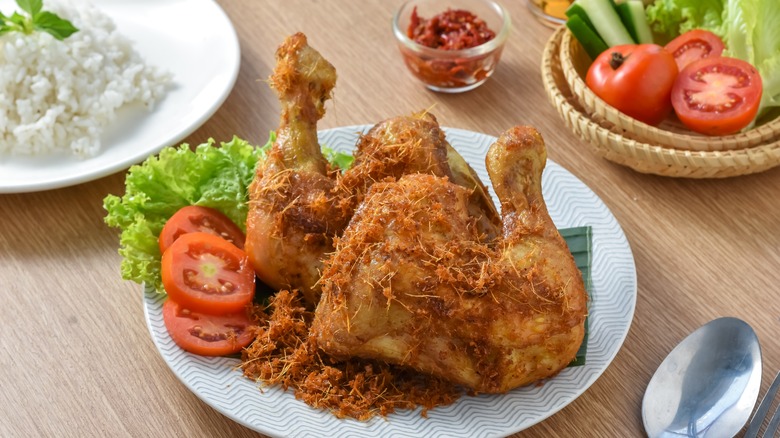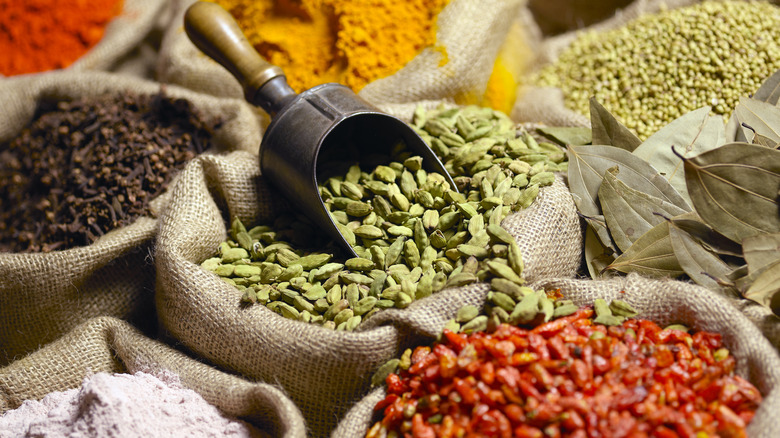The Extra Step That Makes Indonesian Fried Chicken So Crispy
In Indonesia, cooking the chicken in an aromatic paste before frying it ensures that the meat is flavorful to the bone. Plus, it develops that delectable ayam goreng crispy golden brown exterior — all without the need for heavy breading.
While each region has its own signature take on ayam goreng (after all, Indonesia is a huge archipelago), the cooking method typically follows a similar process: The chicken is first simmered in a fragrant spice mixture that infuses the meat with deep flavor. This blend usually includes garlic, turmeric, lemongrass, salam leaf (Indonesian bay leaf), salt, and a pinch of sugar, simmered until the liquid is absorbed and the chicken becomes tender.
After cooling, the chicken is ready for frying, which produces a deliciously crispy crust of spice and skin that stands out from other types of fried chicken. This simmering-before-frying method allows for flexible cooking. This way, the chicken can be prepared in advance and fried in batches as needed. Often served with a side of sambal oelek and fried tempeh, ayam goreng is a celebration of Indonesia's artistry of spice blending.
The many ayam goreng variations
Indonesia boasts a rich variety of ayam goreng, each showcasing the unique flavors of its diverse regions. The name of the dish often changes depending on the additional ingredients that modify the traditional spice and aromatics blend or the region that popularized the recipe.
For instance, ayam goreng kunyit stands out with its signature yellowish hue and subtle earthiness, thanks to the added kunyit or turmeric. This spice not only gives the chicken its distinctive color but also imparts a warm, slightly earthy flavor that balances the savory notes of the dish.
Another variation, ayam cabe ijo, is generously slathered with cabe ijo or green chilis — the vibrant heat pairs perfectly with the crispy fried exterior, creating layers of flavor and texture. Ayam goreng balado (fried chicken with chili), from the Minangkabau people of West Sumatra, incorporates tamarind and spicy chilis into the marinade.
Meanwhile, ayam goreng kalasan uses coconut water, which lends a subtle sweetness and tenderness to the meat. In West Java, ayam goreng lengkuas is a beloved specialty where lengkuas, or galangal, is generously added to the spice mix. The use of galangal infuses the chicken with a unique aromatic flavor and gives it a hint of peppery zing.


